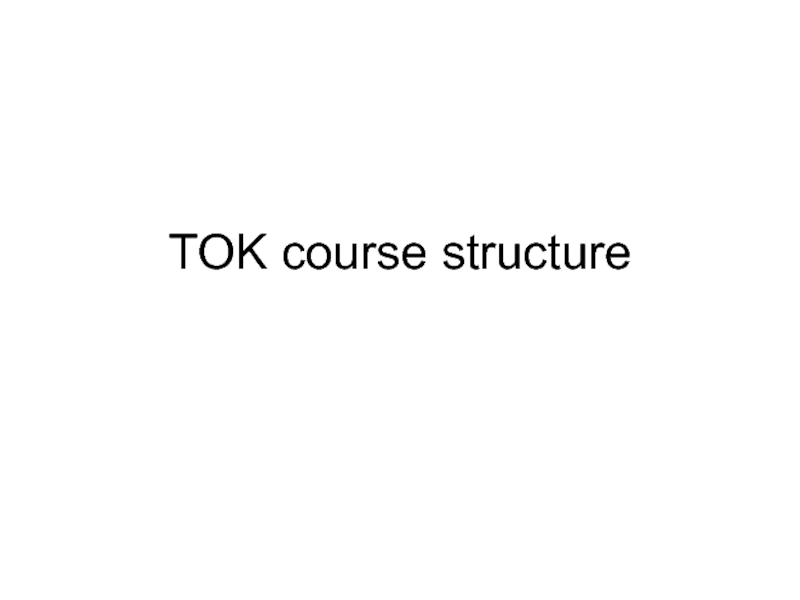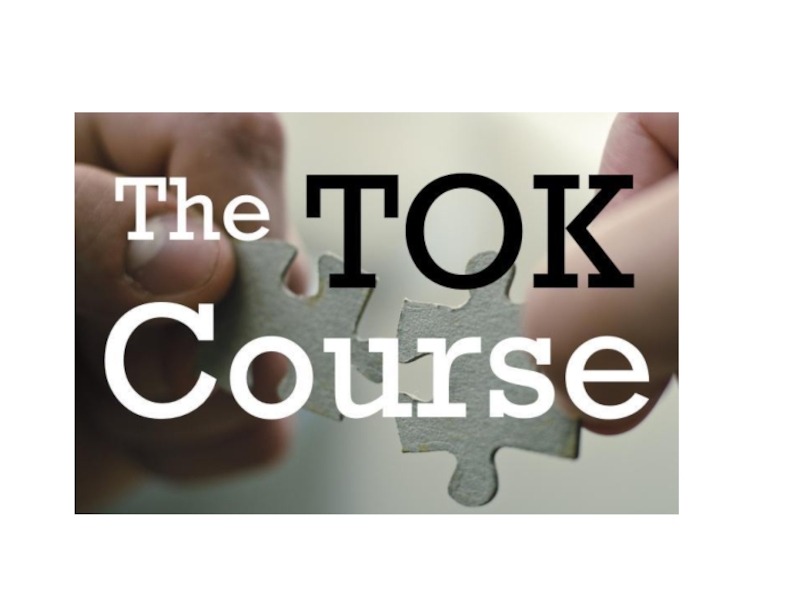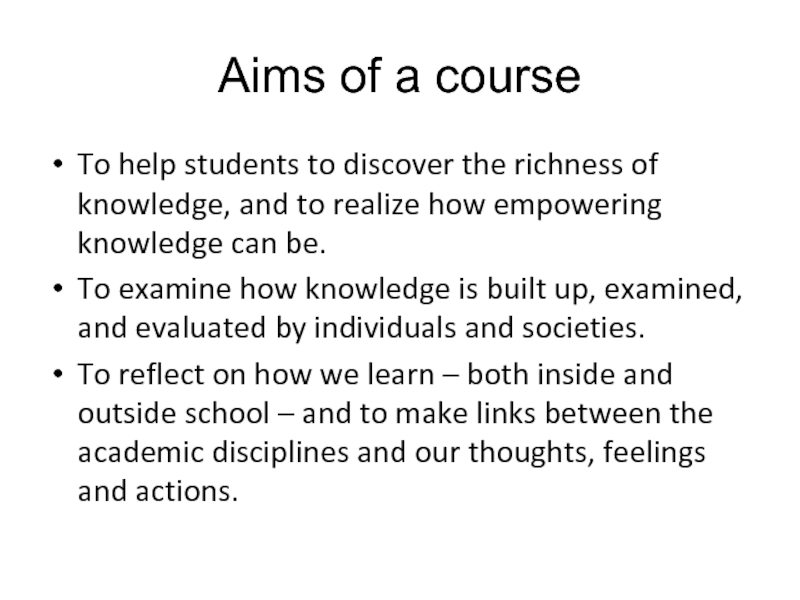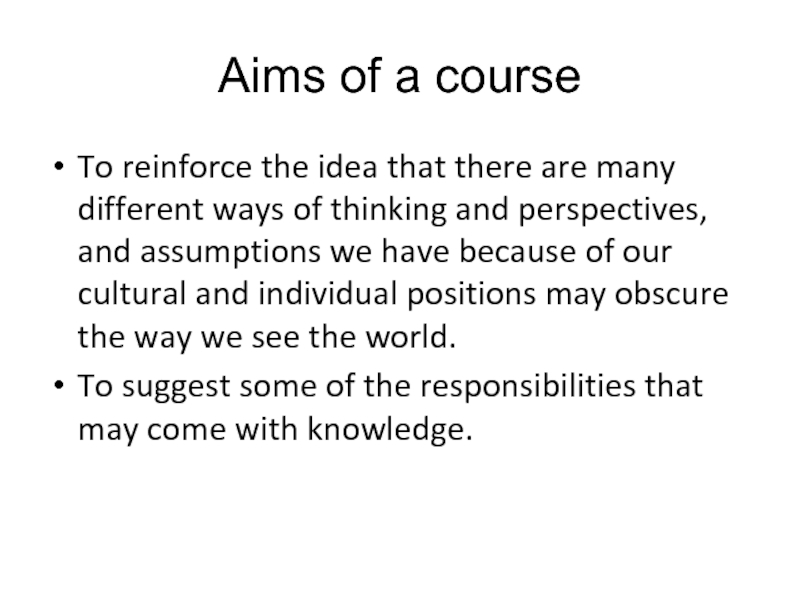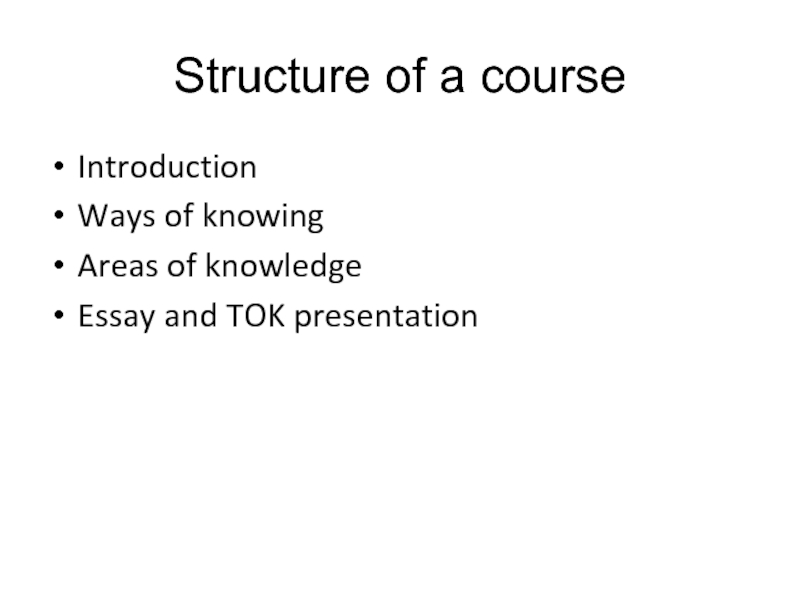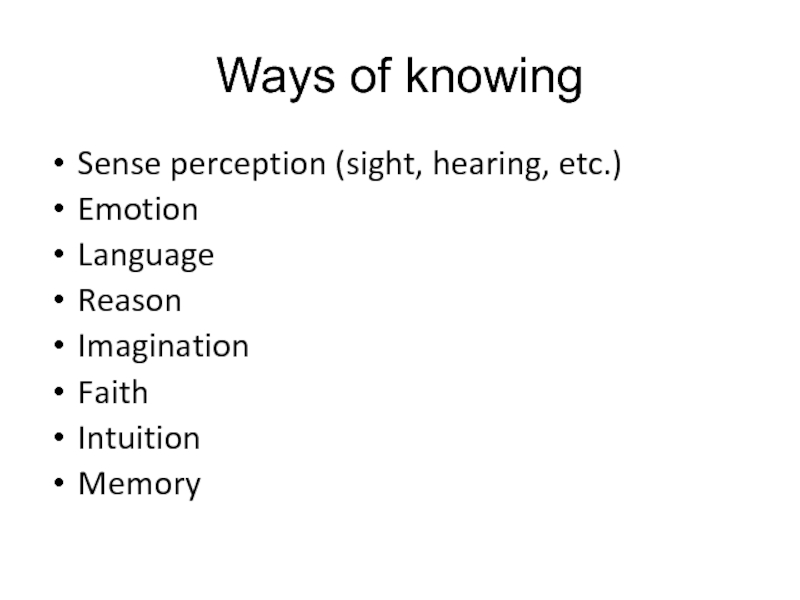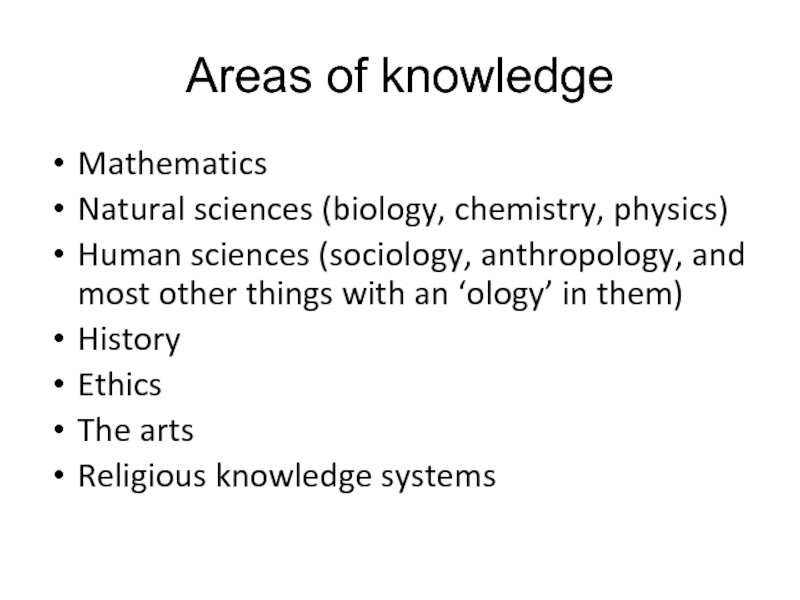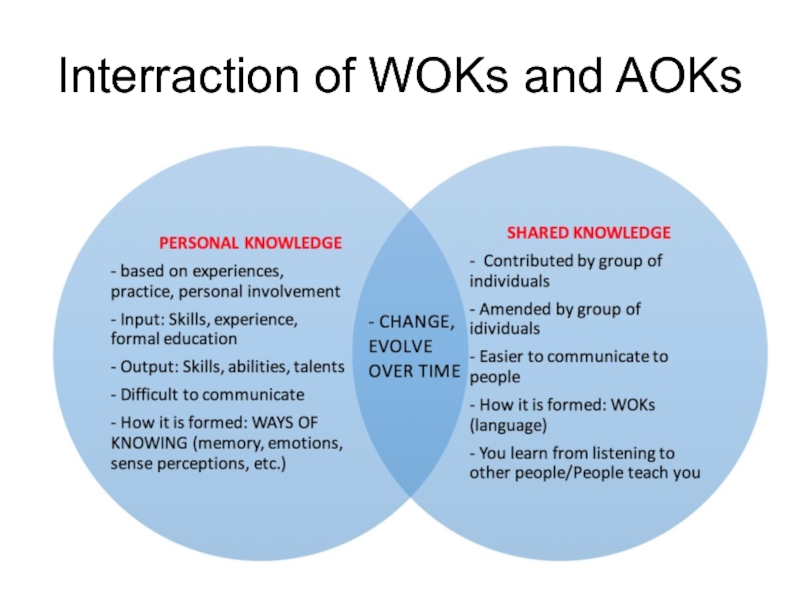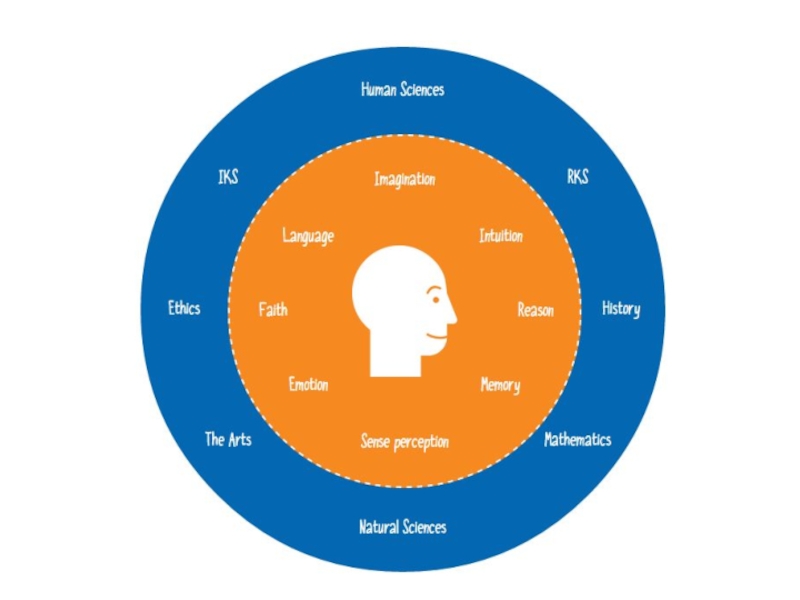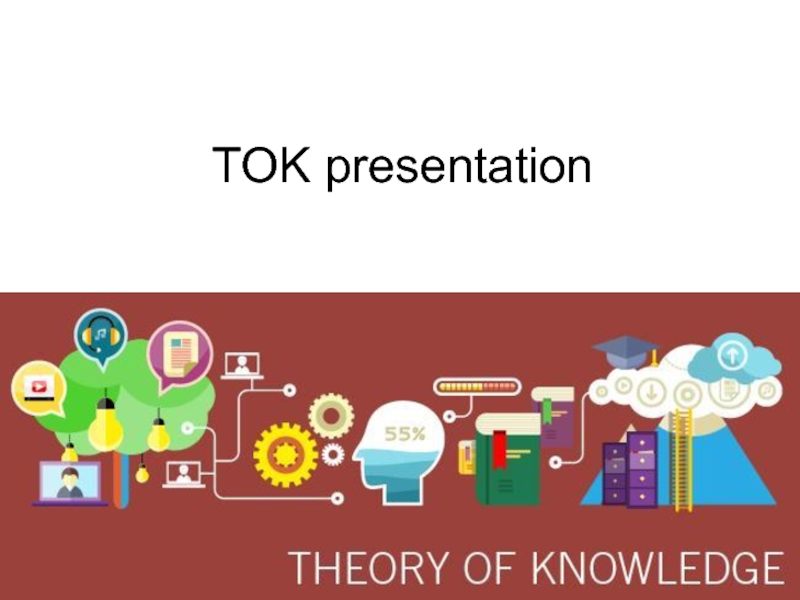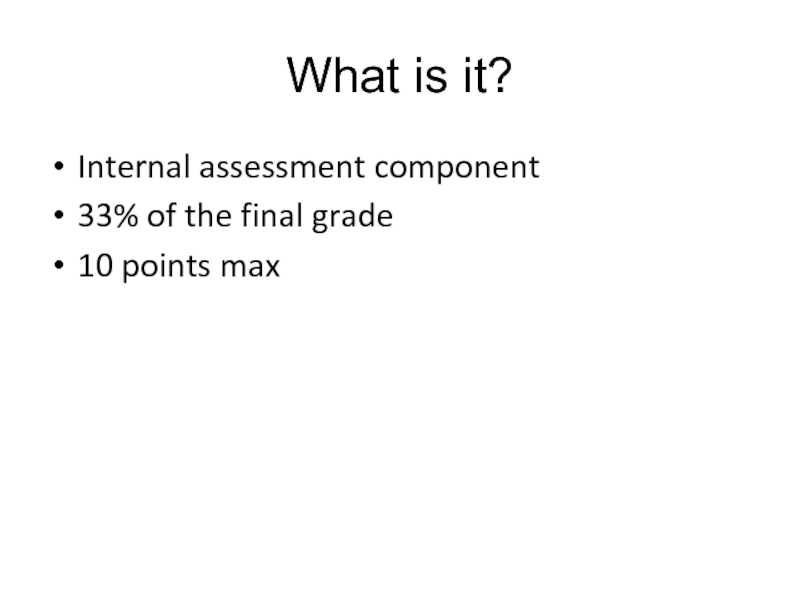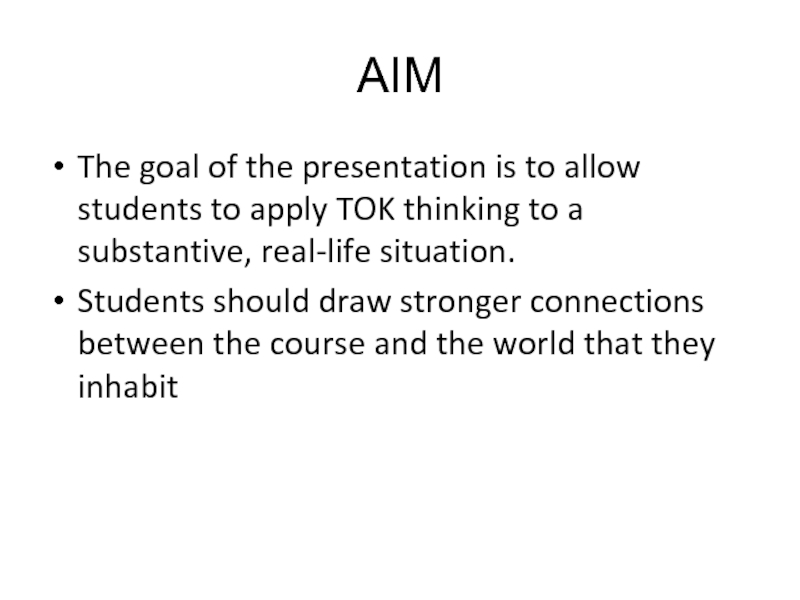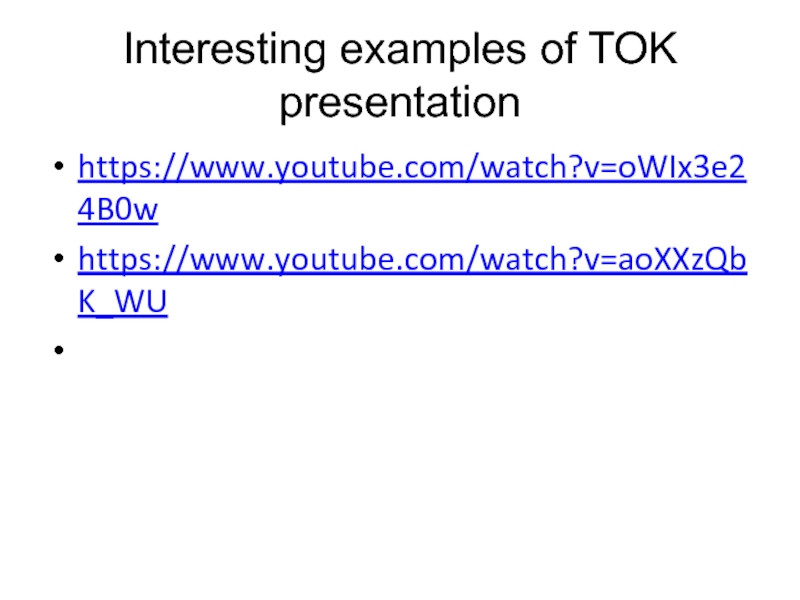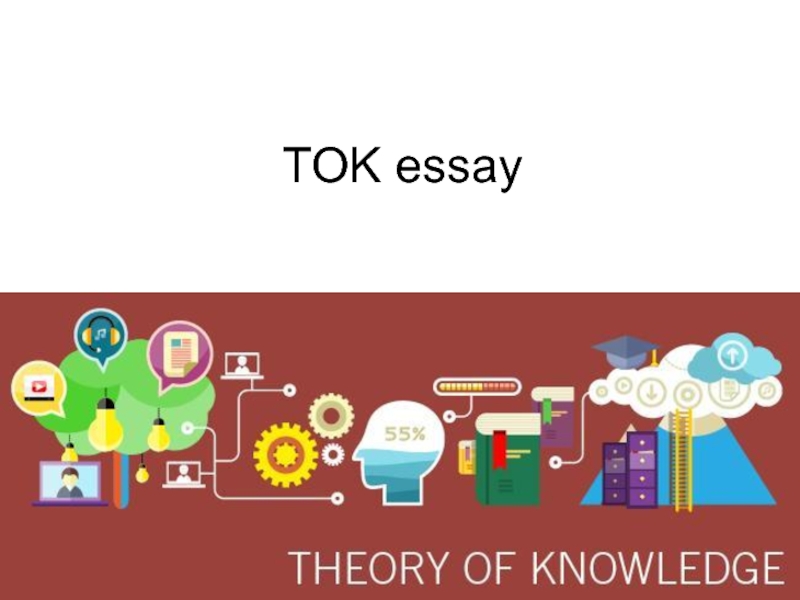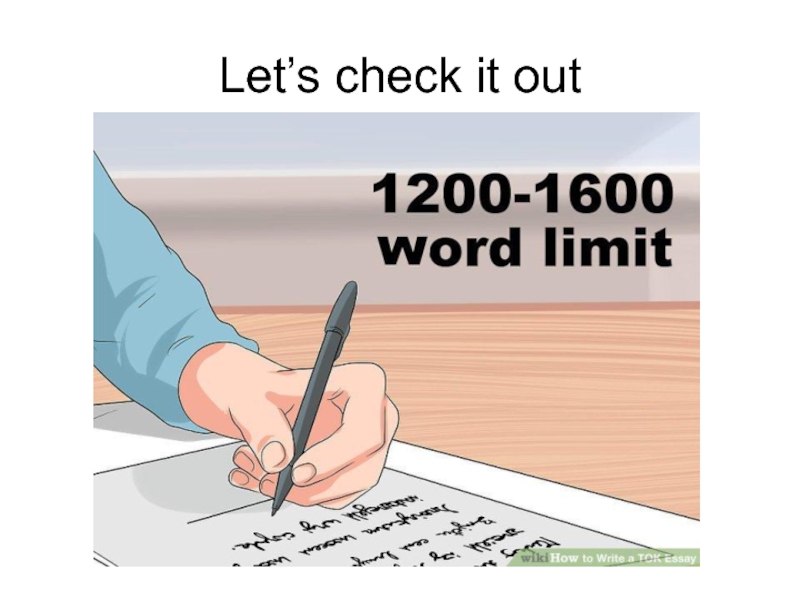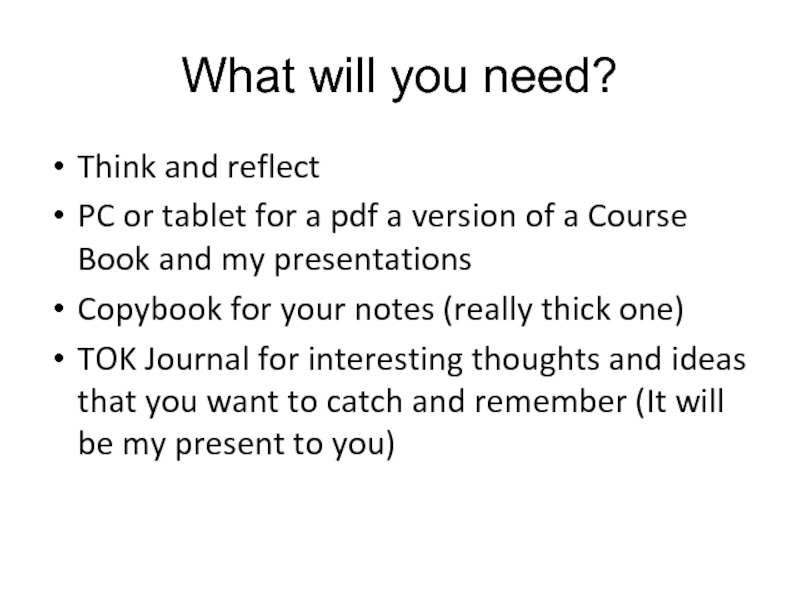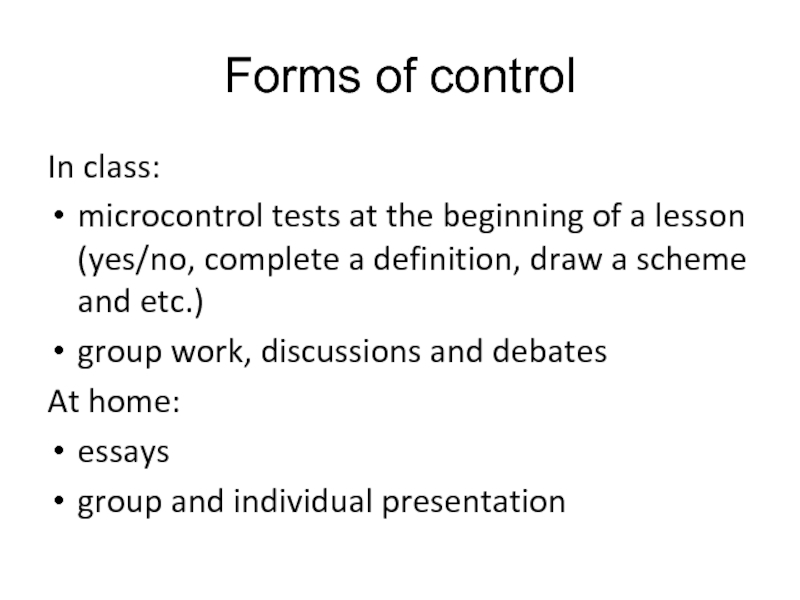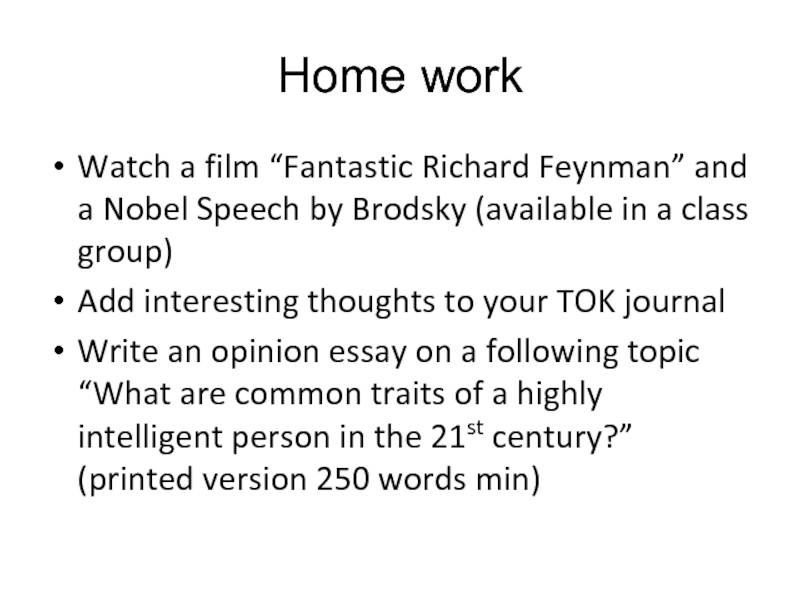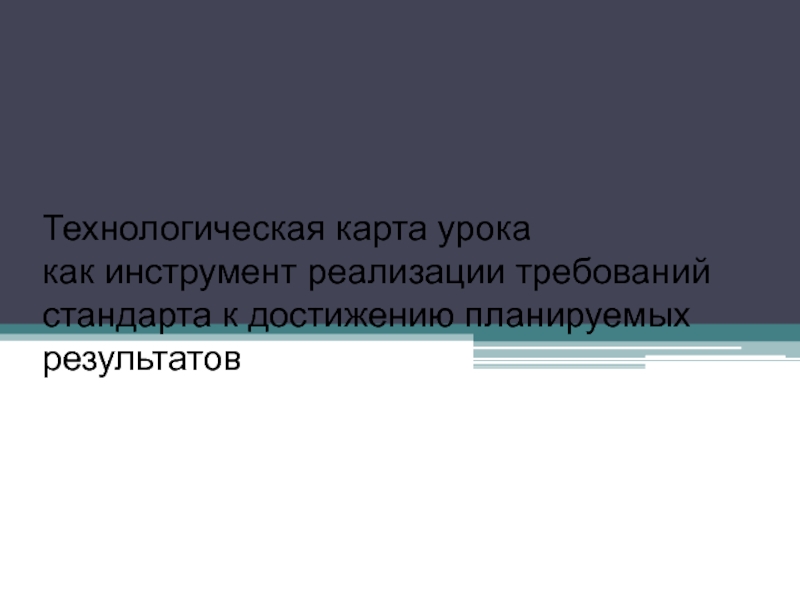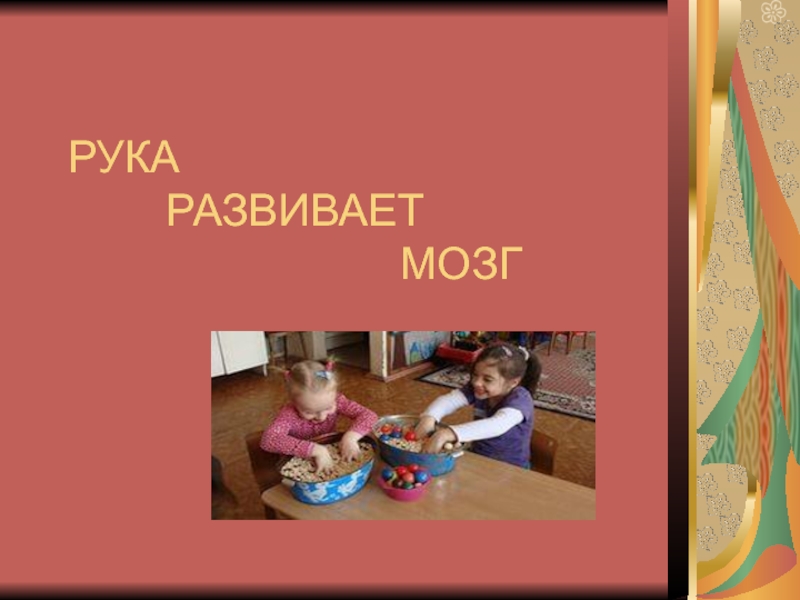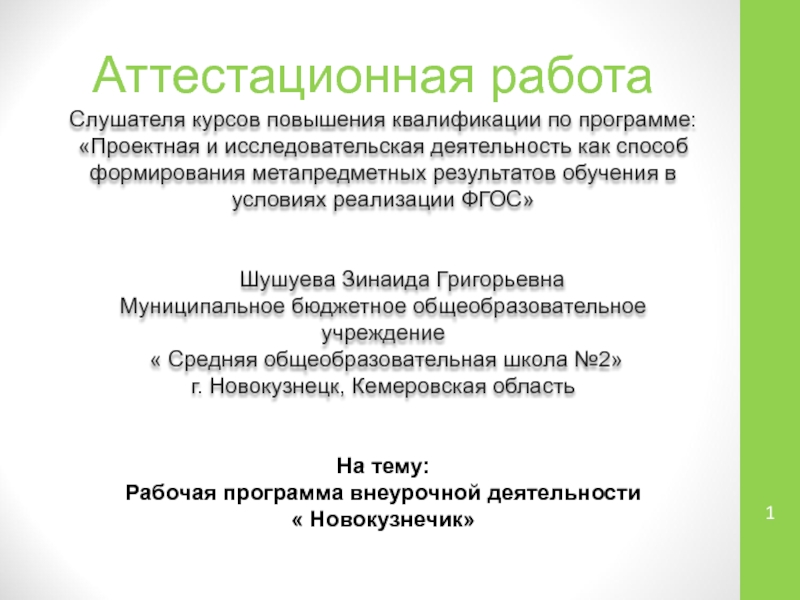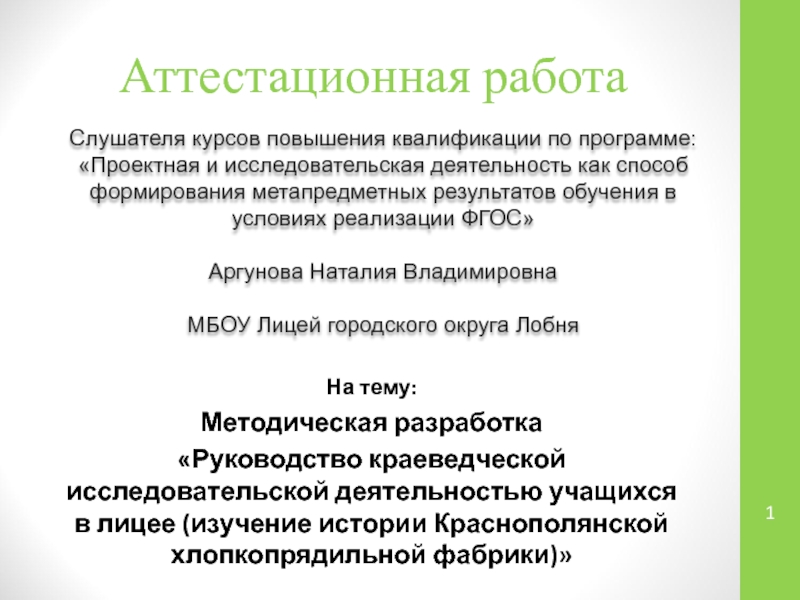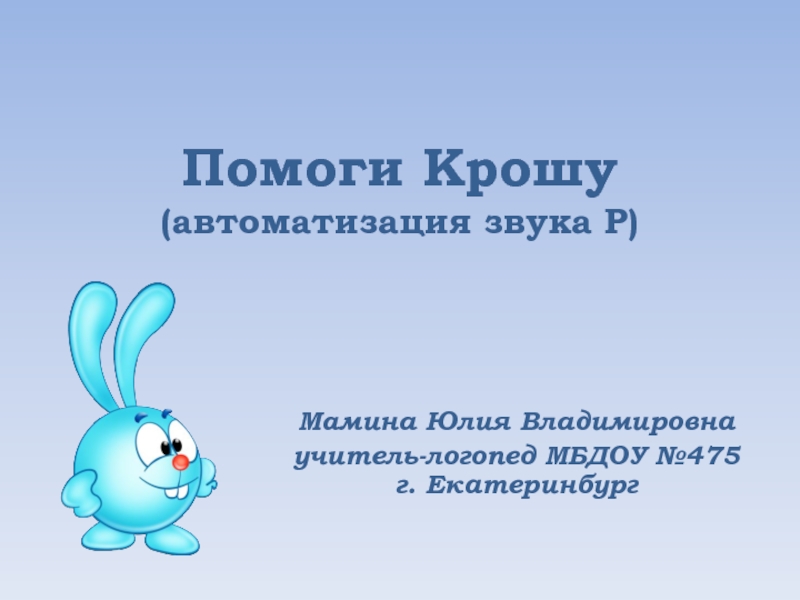- Главная
- Разное
- Дизайн
- Бизнес и предпринимательство
- Аналитика
- Образование
- Развлечения
- Красота и здоровье
- Финансы
- Государство
- Путешествия
- Спорт
- Недвижимость
- Армия
- Графика
- Культурология
- Еда и кулинария
- Лингвистика
- Английский язык
- Астрономия
- Алгебра
- Биология
- География
- Детские презентации
- Информатика
- История
- Литература
- Маркетинг
- Математика
- Медицина
- Менеджмент
- Музыка
- МХК
- Немецкий язык
- ОБЖ
- Обществознание
- Окружающий мир
- Педагогика
- Русский язык
- Технология
- Физика
- Философия
- Химия
- Шаблоны, картинки для презентаций
- Экология
- Экономика
- Юриспруденция
TOK course structure. Aims of a course презентация
Содержание
- 1. TOK course structure. Aims of a course
- 3. Aims of a course To help students
- 4. Aims of a course To reinforce the
- 5. Structure of a course Introduction Ways of knowing Areas of knowledge Essay and TOK presentation
- 6. Ways of knowing Sense perception (sight, hearing, etc.) Emotion Language Reason Imagination Faith Intuition Memory
- 7. Areas of knowledge Mathematics Natural sciences (biology,
- 8. Interraction of WOKs and AOKs
- 10. TOK presentation
- 11. What is it? Internal assessment component 33% of the final grade 10 points max
- 12. AIM The goal of the presentation is
- 13. Interesting examples of TOK presentation https://www.youtube.com/watch?v=oWIx3e24B0w https://www.youtube.com/watch?v=aoXXzQbK_WU
- 14. TOK essay
- 15. What is it? External assessment component 66% of the final grade 10 points max
- 16. Let’s check it out
- 17. What will you need? Think and reflect
- 18. Forms of control In class: microcontrol
- 19. Home work Watch a film “Fantastic Richard
Слайд 3Aims of a course
To help students to discover the richness of
knowledge, and to realize how empowering knowledge can be.
To examine how knowledge is built up, examined, and evaluated by individuals and societies.
To reflect on how we learn – both inside and outside school – and to make links between the academic disciplines and our thoughts, feelings and actions.
To examine how knowledge is built up, examined, and evaluated by individuals and societies.
To reflect on how we learn – both inside and outside school – and to make links between the academic disciplines and our thoughts, feelings and actions.
Слайд 4Aims of a course
To reinforce the idea that there are many
different ways of thinking and perspectives, and assumptions we have because of our cultural and individual positions may obscure the way we see the world.
To suggest some of the responsibilities that may come with knowledge.
To suggest some of the responsibilities that may come with knowledge.
Слайд 6Ways of knowing
Sense perception (sight, hearing, etc.)
Emotion
Language
Reason
Imagination
Faith
Intuition
Memory
Слайд 7Areas of knowledge
Mathematics
Natural sciences (biology, chemistry, physics)
Human sciences (sociology, anthropology, and
most other things with an ‘ology’ in them)
History
Ethics
The arts
Religious knowledge systems
History
Ethics
The arts
Religious knowledge systems
Слайд 12AIM
The goal of the presentation is to allow students to apply
TOK thinking to a substantive, real-life situation.
Students should draw stronger connections between the course and the world that they inhabit
Students should draw stronger connections between the course and the world that they inhabit
Слайд 13Interesting examples of TOK presentation
https://www.youtube.com/watch?v=oWIx3e24B0w
https://www.youtube.com/watch?v=aoXXzQbK_WU
Слайд 17What will you need?
Think and reflect
PC or tablet for a pdf
a version of a Course Book and my presentations
Copybook for your notes (really thick one)
TOK Journal for interesting thoughts and ideas that you want to catch and remember (It will be my present to you)
Copybook for your notes (really thick one)
TOK Journal for interesting thoughts and ideas that you want to catch and remember (It will be my present to you)
Слайд 18Forms of control
In class:
microcontrol tests at the beginning of a
lesson (yes/no, complete a definition, draw a scheme and etc.)
group work, discussions and debates
At home:
essays
group and individual presentation
group work, discussions and debates
At home:
essays
group and individual presentation
Слайд 19Home work
Watch a film “Fantastic Richard Feynman” and a Nobel Speech
by Brodsky (available in a class group)
Add interesting thoughts to your TOK journal
Write an opinion essay on a following topic “What are common traits of a highly intelligent person in the 21st century?” (printed version 250 words min)
Add interesting thoughts to your TOK journal
Write an opinion essay on a following topic “What are common traits of a highly intelligent person in the 21st century?” (printed version 250 words min)
